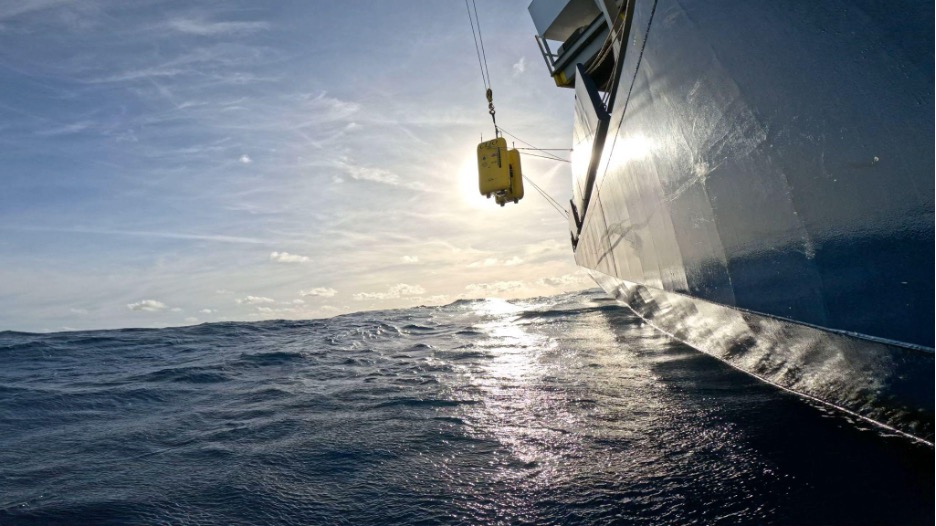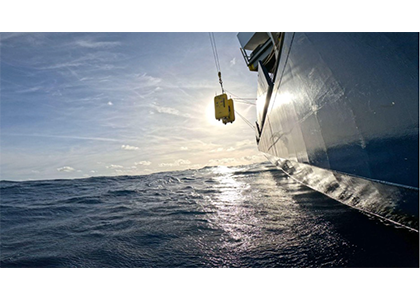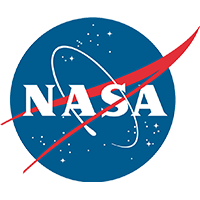Marine microeukaryotes are important players in ocean biogeochemistry, contributing to primary production and respiration. Their diversity and function is generally better understood in coastal regions, and harder to study in offshore locations, especially at depth. The CASHEW (Clio Atlantic Sectional Hoedown Ending at Woods Hole) expedition aimed to characterize microeukaryotic community composition and functionality along a gradient in the western North Atlantic Ocean.
Autonomous underwater vehicle (AUV) Clio is a refrigerator sized robot that was used to collect biological material throughout the water column (see photo). This cruise was Clio’s first ocean transect, before this expedition Clio was in a testing phase. Clio was used to survey the upper 1 km of the water column. At one station, Clio was successfully sent 4.1 km down to the sea floor! We used the biomass collected to analyze metatranscriptomes and metaproteomes, which allowed us to examine the identity and metabolic profiles of marine microorganisms.

One of the most interesting aspects of this study was the similarities and differences in biological patterns based on whether transcripts or proteins were considered. While eukaryotic community breakdown was generally consistent between transcripts and proteins, there were more clear signs of heterotrophic taxa at depth in the protein fraction. Transcripts also indicated nitrate stress in continental margin waters with phosphate stress offshore, potentially a result of aerosol dust introducing iron and nitrogen. This study highlights the value of complementary omic datasets when reconstructing microbial community metabolism and showcases the degree of omic resolution possible with AUV efforts.
Authors
Natalie Cohen (University of Georgia Skidaway Institute of Oceanography)
Mak Saito (Woods Hole Oceanographic Institution)




